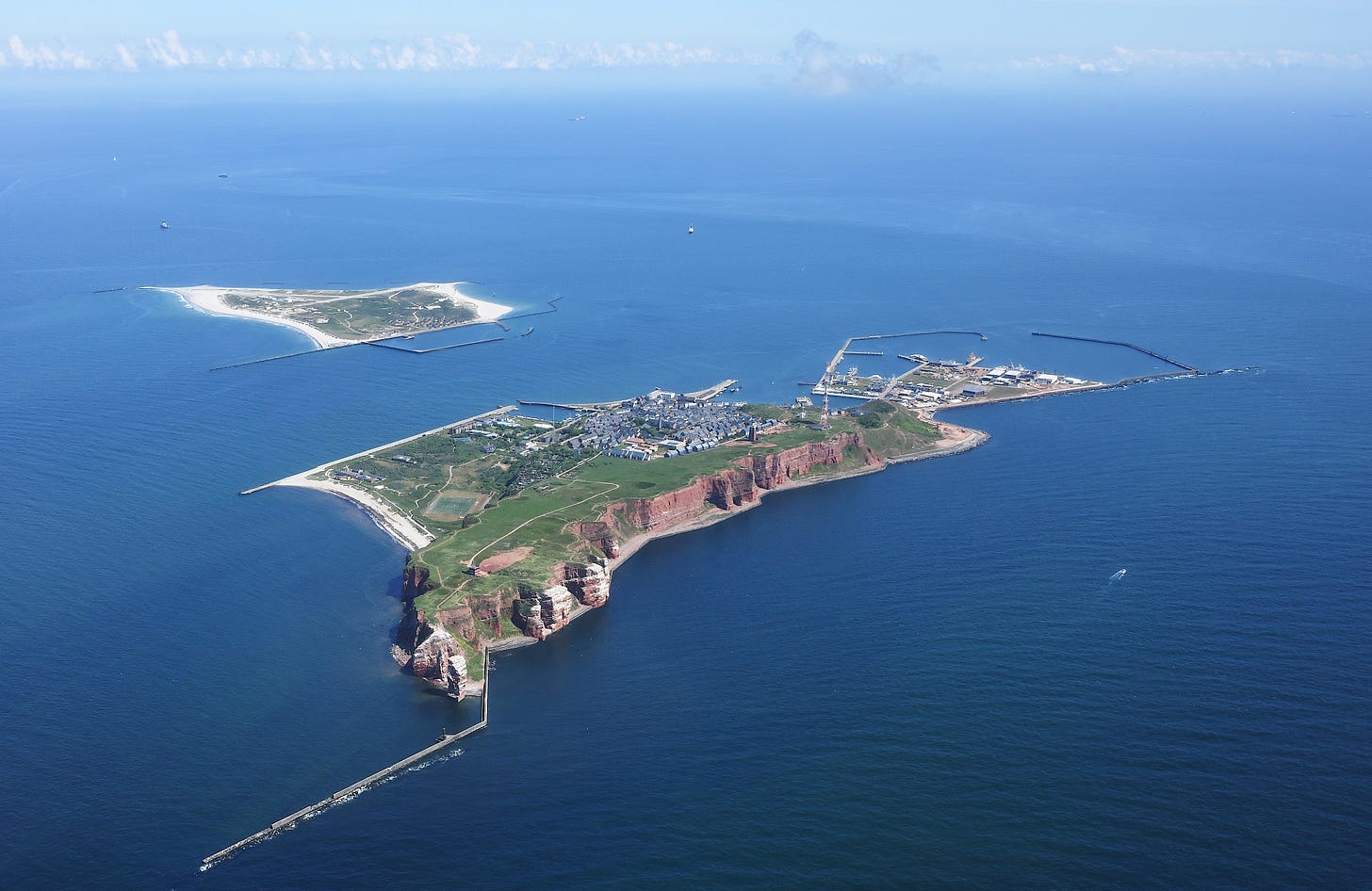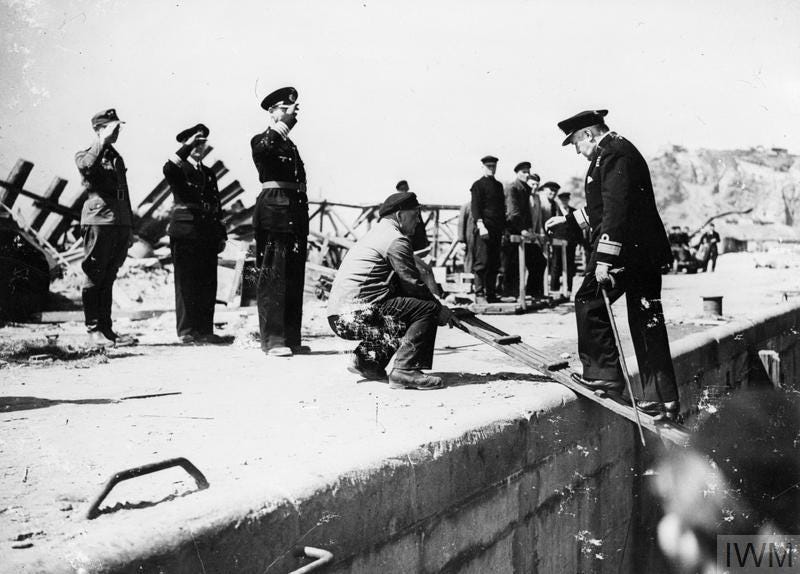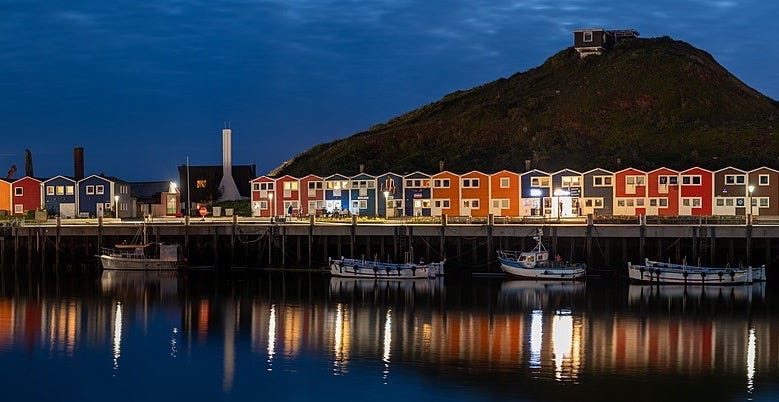It’s been a febrile few days in Germany, a country I previously called home and whose language will always be my first linguistic love.
Or so I gather, from old friends and the odd half-hearted check-in with German television and news sites. With the AfD’s strong performance in the recent snap federal election, it’s a time for searching questions about Germany’s political future — with the shadows of the past never too far from mind.
But this coming Saturday the focus on Heligoland — a geological red sandstone anomaly in the southeastern North Sea and Germany’s furthest-flung archipelago — will be rather different, though no less bound up with the country’s turbulent twentieth-century history.
On the main island in the Nordseehalle, an evening of traditional folk dancing and sea shanties will mark Heligoland’s annual public holiday, the anniversary of its handover from Britain to West Germany some seventy-three years ago, on March 1st 1952.

There was, in fact, not much left to hand over in 1952. Just five years earlier, in April 1947, Heligoland had been the location of Operation Big Bang, an attempt by the Royal Navy to destroy the archipelago’s extensive military installations and surplus ammunition left over from World War II.
Under Nazi rule, Heligoland had become one large construction site in the late 1930s— another of the many breaches of the Treaty of Versailles that decade. Tunnels, bunkers, submarine pens and an airfield gradually took up what little space was available, and plans were made to extend the archipelago far out to sea. The Nazis’ aim: to build a counterpart to Britain’s Scapa Flow — a naval base large enough to accommodate the entire German fleet.
Project Hummerschere (‘lobster claw’), as the plan was called, was to take ten years in total, proceeding in secret as far as is possible on a rock surrounded by the busy shipping lanes which criss-cross the German Bight. Once building work was underway, foreigners were no longer permitted to set foot on the island, and any official photographs were heavily censored.1
But the importance of Heligoland to the Nazi elite ran deeper than military strategy. This was the mythical homeland of the Germanic race, or so Heinrich Pudor, a self-proclaimed ‘pioneer of Germanium and anti-Semitism’, had insisted in the years running up to World War II. Himmler himself had commissioned a pre-determined ‘research’ project in 1938 to demonstrate that the archipelago had been a centre of early Germanic worship.2
At the end of the war, Heligoland, like the rest of Germany’s North Sea islands, fell under the British occupation sector. By the time of its surrender in May 1945, the islands had been heavily bombed by the RAF’s Bomber Command and the last inhabitants evacuated to the mainland. Still, the view from London was that no risks could be taken regarding the future of the archipelago — which had long been a microcosm of Anglo-German hostilities, as detailed in Jan Rüger’s fascinating and highly readable 2017 book.

And so at 1 o’clock on April 18th 1947, after months of work wiring up more than 6,700 tons of explosives, the button was pressed on Operation Big Bang. It was, unsurprisingly, quite the spectacle, as this Pathé newsreel from the time shows:
When, five years later, the archipelago was handed over to West Germany — following a short-lived Christmas occupation by two Heidelberg students who managed to persuade a Cuxhaven fisherman to land them on the deserted rock— the mood was one of hope, despite the apocalyptic landscape all around. As Adenauer, then Chancellor of West Germany, declared in a radio broadcast:
We all carry in us the conviction that the time of the self-destruction [Selbstzerfleischung] of the Western world has to belong to the past once and for all. Peaceful Heligoland, set in the seas between Germany and Britain, will be in future a symbol of the will to peace and friendship of both nations.3
For so long a focus point of Anglo-German tensions, today most Brits of my generation would I guess struggle to place Heligoland on a map, even in the correct sea — which says as much about the UK education system as it does about changes in global affairs since 1952.
But at a time when both Germany and the UK are facing up to an uncertain European future, Heligoland is a firm reminder of past geopolitical struggles remarkably overcome.

Jan Rüger, Heligoland: Britain, Germany, and the struggle for the North Sea. (Oxford: Oxford University Press, 2017), chapter 8.
Rüger, Heligoland, chapter 8.
Rüger, Heligoland, chapter 9.




I, rather shamefully, admit that I had never heard of Heligoland prior to reading this. Very interesting.
I am fond of the German language's love of ludicrously long words!!
The island most probably was a holy island for Germanic peoples, especially the Frisians, in early medieval times, and maybe the location of a pan-Frisian thing assembly site as well: https://frisiacoasttrail.blog/2021/09/05/the-thing/